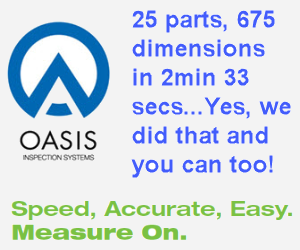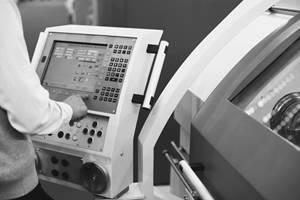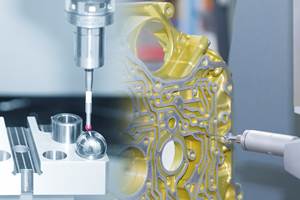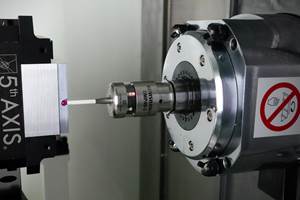Understanding New Surface and Profile Standards
Standards for surface finishes and profiles are not static; they change as technology changes or new processes come along that need to be considered.
Share
Read Next
When you put a sheet of paper in the printer, you don’t think twice about it. The paper size fits the printer; the printer fits the paper. This is no coincidence, but instead, the result of a standard. Even though there are probably millions of different standards worldwide, if you consider country-specific standards, many are based on some common threads. Like the paper size used in your printer, they provide manufacturers and consumers with important rules, set standards for products and processes and create clear criteria worldwide.
These standards are not static; they change as technology changes or new processes come along that need to be considered. The same is true with the standards for surface finish and profile. The International Standards Organization (ISO) in Geneva has published new profile standards ISO 21920-1, -2 and -3 for surface textures with edition 2021-12. They combine the previous surface finish standards into one series of standards.
This column won’t go into all the details of the changes to the new standard, but rather, will discuss the areas being updated. There are many technical documents out there provided by the manufacturers of surface measuring systems that provide these details. In general, though, the new specification makes updates to the following three areas.
Part One: Drawing ensures the functions of the components
The first part of the new standards replaces the previous ISO 1302 and covers the processes surrounding the drawing entries that a designer specifies for the manufacture of a component. The most important change is that from now on, only the drawing is the basis for the conditions used to check a manufactured component. This section defines how the designer must specify the part without adding free text. In this way, it is possible that the specification alone ensures the function of the component. For example, if the print only specifies the parameter “Ra” and a value, then in many cases, it is not ensured that this specification correlates with the functional behavior of the part. Part one also includes new terms for the surface parameters and more detail about how the parameter should be measured.
Part Two: Designers in Demand
The second part of the new ISO 21920 deals with the relationship between parameters and functions of components. This section describes more than 100 parameters, offering designers an enormous toolbox. Designers will be asked to select the right parameter for a part.
There are also clarifications in the parameters used to calculate profile elements, as there were previously greater measurement uncertainties because the profile elements were described but not clearly defined in detail, especially in borderline cases. This has now been significantly improved.
Part Three: How to Arrive at a Valid Result
The third part defines the conditions according to or under which measurements are made. Thus, it defines requirements for measurement procedures and their correct implementation — the default case. This means that if no explicit specifications are made in the drawing, what is in the standard applies; in other words, everything that does not have to be explicitly specified.
Conclusion: Expanded Possibilities for Function Descriptions
For most users, the new standard changes nothing at all. It only offers extended possibilities for functional descriptions, for example, in additive manufacturing processes, where new structures or filters are sometimes required.
Unlike in the past, it is no longer the workpiece that determines the filter setting but the associated drawing. This increases the reliability of decisions regarding whether a tested surface meets the requirements.
The bottom line is that the weak points of the old standard — such as imprecise and non-practical definitions — have been eliminated. Where the old standard delivered reasonable results, this also applies to the new standard. Where the old standard was fuzzy, the new standard is sharper. Due to the continuity by which the new profile standard retains everything that has proven itself in industrial practice, users can continue to measure in accordance with the standard even with their existing measuring devices.
Most suppliers of surface finish measuring devices and systems are updating their products to incorporate this new specification. As mentioned, current users won’t see much of a difference in their systems, but as the designers start implementing the details of the parameter measurement, these settings will become part of the measurement process.
Related Content
Orthopedic Event Discusses Manufacturing Strategies
At the seminar, representatives from multiple companies discussed strategies for making orthopedic devices accurately and efficiently.
Read MoreHelp Operators Understand Sizing Adjustments
Even when CNCs are equipped with automatic post-process gaging systems, there are always a few important adjustments that must be done manually. Don’t take operators understanding these adjustments for granted.
Read MoreRethink Quality Control to Increase Productivity, Decrease Scrap
Verifying parts is essential to documenting quality, and there are a few best practices that can make the quality control process more efficient.
Read MoreWhat Should Machinists Know About In-Machine Probing?
In-machine probing doesn’t reach the power of CMMs but can still be useful for pre- and mid-process control, as well as for “rough screening” of parts.
Read MoreRead Next
The Future of High Feed Milling in Modern Manufacturing
Achieve higher metal removal rates and enhanced predictability with ISCAR’s advanced high-feed milling tools — optimized for today’s competitive global market.
Read MoreIMTS 2024: Trends & Takeaways From the Modern Machine Shop Editorial Team
The Modern Machine Shop editorial team highlights their takeaways from IMTS 2024 in a video recap.
Read MoreInside Machineosaurus: Unique Job Shop with Dinosaur-Named CNC Machines, Four-Day Workweek & High-Precision Machining
Take a tour of Machineosaurus, a Massachusetts machine shop where every CNC machine is named after a dinosaur!
Read More





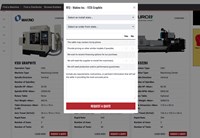




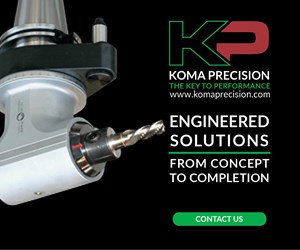





.jpg;maxWidth=300;quality=90)


